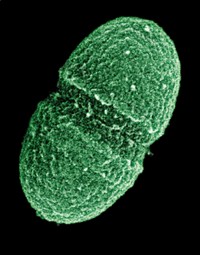Advertisement
Grab your lab coat. Let's get started
Welcome!
Welcome!
Create an account below to get 6 C&EN articles per month, receive newsletters and more - all free.
It seems this is your first time logging in online. Please enter the following information to continue.
As an ACS member you automatically get access to this site. All we need is few more details to create your reading experience.
Not you? Sign in with a different account.
Not you? Sign in with a different account.
ERROR 1
ERROR 1
ERROR 2
ERROR 2
ERROR 2
ERROR 2
ERROR 2
Password and Confirm password must match.
If you have an ACS member number, please enter it here so we can link this account to your membership. (optional)
ERROR 2
ACS values your privacy. By submitting your information, you are gaining access to C&EN and subscribing to our weekly newsletter. We use the information you provide to make your reading experience better, and we will never sell your data to third party members.
Environment
White House announces National Microbiome Initiative
by Paul S. Weiss , Jeff F. Miller
June 27, 2016
| A version of this story appeared in
Volume 94, Issue 26

The following is a guest editorial by Paul S. Weiss, professor of chemistry and biochemistry, and Jeff F. Miller, professor of microbiology, immunology, and molecular genetics, at the University of California, Los Angeles.
Last month at the White House, the National Microbiome Initiative was announced. The objective of the initiative is to understand the complex interacting communities of organisms in and on us, as well as in the ground, ocean, air, plants, animals, and elsewhere. These interactions impact our health, agriculture, climate, and more. The announcement capped months of discussions and proposals from interested groups of scientists and engineers catalyzed by The Kavli Foundation (which had done the same to bring the BRAIN Initiative to fruition) and championed by leading microbiologist Jo Handelsman, associate director for science at the White House Office of Science & Technology Policy.
This initiative will create tremendous opportunities for chemists and those in related disciplines. Many were laid out in the technology road map, “Tools for the Microbiome: Nano and Beyond,” that a number of leaders in the field published earlier this year (ACS Nano 2016, DOI: 10.1021/acsnano.5b07826). These opportunities include the areas of chemical signaling, synthetic biology, atmospheric science, earth science, oceanography, data science, visualization, and many other fields.
The initiative also gives a number of scientific communities and organizations the opportunity to work together and to share ideas, problems, expertise, and approaches. The American Chemical Society, the American Society for Microbiology, the American Geophysical Union, and others have already made joint efforts along these lines. You can expect to see more elaboration of opportunities and needs for the National Microbiome Initiative at national meetings and elsewhere.
A number of foundations, universities, and other institutions have committed substantial resources to the initiative, as have federal agencies. Like the BRAIN Initiative, early investments will go toward tool development and interdisciplinary efforts. The federal government is hoping that its efforts will catalyze private and philanthropic support. The initial results of this encouragement were detailed on the day of the announcement. Another interesting aspect of the initiative is the promotion of citizen science. A number of presentations at the announcement event related to how to involve the public in this effort.
The data analysis and visualization needs of the National Microbiome Initiative are substantial. The multimodal, multidimensional data will require new means to sort, to display, and to understand. The advances targeted will benefit other areas of chemistry, engineering, nanoscience, and related fields.
Finally, we fully expect this effort to be global. In our own laboratories and centers, we already have international ties in these areas, and we anticipate that most of the efforts announced in the National Microbiome Initiative will rapidly spread around the world.
Views expressed on this page are those of the authors and not necessarily those of ACS.




Join the conversation
Contact the reporter
Submit a Letter to the Editor for publication
Engage with us on Twitter